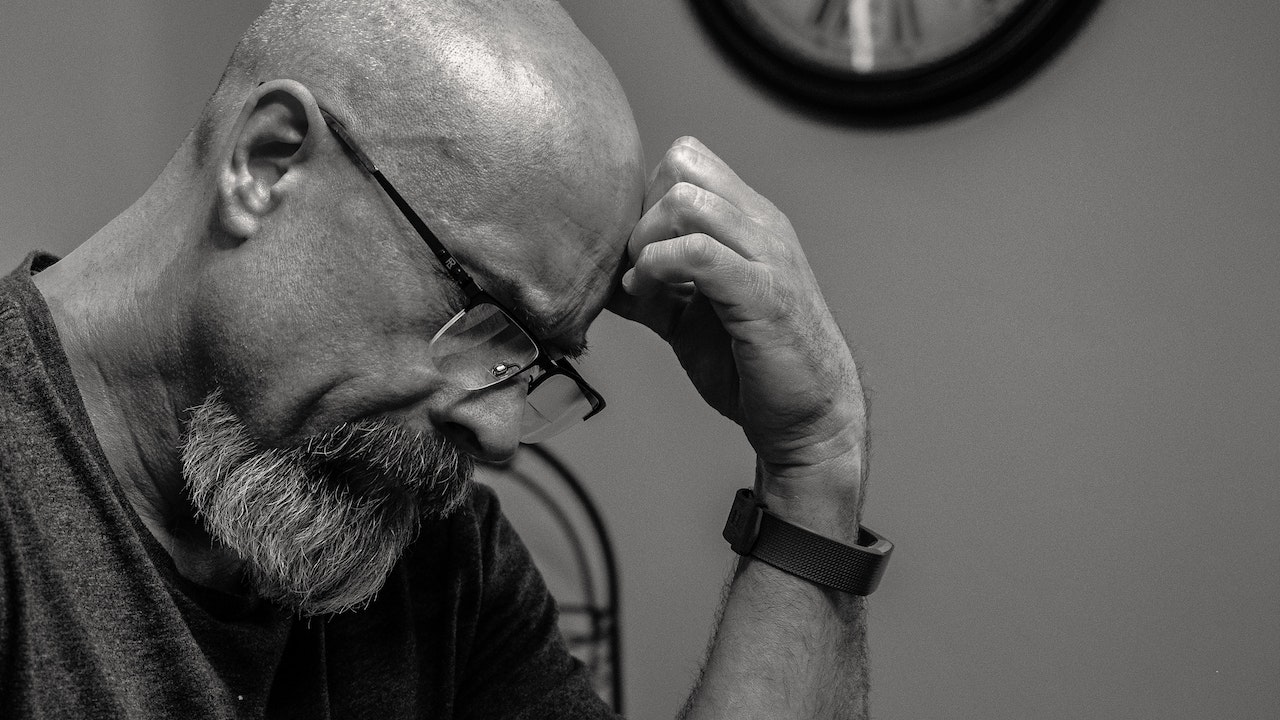Sleep apnea is a sleep disorder that affects millions of people worldwide, with middle-aged men being a particularly vulnerable demographic. This article explores the intricacies of sleep apnea, its causes, symptoms, diagnosis, treatment options, and most importantly, its impact on middle-aged men. By shedding light on this often-underestimated condition, we hope to raise awareness, encourage early detection, and emphasize the importance of effective management to improve the overall health and well-being of middle-aged men.
Understanding Sleep Apnea
Sleep apnea is a complex sleep disorder characterized by recurrent interruptions in breathing during sleep. These interruptions, or apneas, occur when the upper airway becomes partially or completely blocked, leading to shallow breathing or, in severe cases, temporary cessation of breathing altogether. While sleep apnea can affect people of all ages and genders, middle-aged men are at a higher risk.
Causes of Sleep Apnea
- Obesity: One of the leading risk factors for sleep apnea in middle-aged men is obesity. Excess body fat, especially around the neck and throat area, can put pressure on the airway, making it more likely to collapse during sleep.
- Age: As men age, the muscles that support the airway tend to lose tone and strength, making them more susceptible to airway collapse during sleep.
- Gender: Men are more likely than women to develop sleep apnea, and this risk increases with age.
- Genetics: Family history can play a role in sleep apnea, with some genetic factors contributing to airway abnormalities that increase the risk.
- Lifestyle Factors: Smoking, excessive alcohol consumption, and sedative use can relax the throat muscles and exacerbate sleep apnea.
Symptoms of Sleep Apnea
Recognizing the symptoms of sleep apnea is crucial for early diagnosis and intervention. While the severity of symptoms can vary, common signs include:
- Loud Snoring: One of the hallmark symptoms of sleep apnea, especially in middle-aged men, is loud, disruptive snoring. This snoring is often punctuated by periods of silence as breathing stops temporarily.
- Excessive Daytime Sleepiness: Individuals with sleep apnea frequently experience excessive daytime sleepiness, which can interfere with work, daily activities, and overall quality of life.
- Morning Headaches: Waking up with a headache is a common complaint among sleep apnea sufferers due to oxygen deprivation during sleep.
- Difficulty Concentrating: Sleep apnea can lead to cognitive impairments, affecting memory, concentration, and the ability to focus.
- Irritability and Mood Changes: Chronic sleep disruption can lead to irritability and mood swings, impacting personal and professional relationships.
- High Blood Pressure: Sleep apnea is associated with an increased risk of hypertension, which further elevates the risk of heart disease and stroke.
Diagnosing Sleep Apnea
Diagnosing sleep apnea typically involves a comprehensive evaluation, including:
- Sleep Study (Polysomnography): A sleep study is the gold standard for diagnosing sleep apnea. It monitors various parameters during sleep, such as breathing patterns, brain activity, heart rate, and oxygen levels.
- Home Sleep Apnea Test (HSAT): In some cases, a portable HSAT device may be used for screening and diagnosing mild to moderate sleep apnea.
- Clinical Evaluation: A healthcare provider will review the patient’s medical history and perform a physical examination to identify risk factors and symptoms associated with sleep apnea.
Impact on Middle-Aged Men
Middle-aged men are particularly vulnerable to the adverse effects of sleep apnea due to a combination of risk factors, including age, gender, and lifestyle choices. The impact of sleep apnea on this demographic is multifaceted:
- Cardiovascular Health: Sleep apnea significantly increases the risk of cardiovascular problems, such as high blood pressure, heart disease, and stroke. Middle-aged men with sleep apnea face a heightened risk of heart-related complications.
- Metabolic Health: Sleep apnea can disrupt glucose metabolism and lead to insulin resistance, potentially increasing the risk of type 2 diabetes.
- Mental Health: The cognitive and emotional consequences of sleep apnea, such as impaired concentration, memory problems, and mood swings, can affect the overall mental well-being of middle-aged men.
- Daytime Functioning: Excessive daytime sleepiness can hinder productivity at work and may lead to accidents while driving or operating machinery, posing a significant risk to middle-aged men’s safety.
- Quality of Life: Sleep apnea can erode the overall quality of life for middle-aged men, affecting relationships, job performance, and the ability to engage in physical activities they once enjoyed.
Management and Treatment
Effective management of sleep apnea is crucial to mitigate its impact on middle-aged men’s health. Treatment options include:
- Lifestyle Modifications: Encouraging middle-aged men to adopt a healthy lifestyle by losing weight, avoiding alcohol and sedatives, quitting smoking, and engaging in regular exercise can help reduce the severity of sleep apnea.
- Continuous Positive Airway Pressure (CPAP): CPAP therapy is a common treatment for sleep apnea. It involves wearing a mask connected to a machine that delivers a continuous stream of air to keep the airway open during sleep.
- Oral Appliances: Dental devices designed to reposition the jaw and tongue to maintain an open airway can be effective for mild to moderate sleep apnea cases.
- Surgery: Surgical options may be considered for severe cases of sleep apnea. Procedures can include tissue removal, jaw repositioning, or implantation of devices to support the airway.
- Positional Therapy: For some individuals, positional therapy, which encourages sleeping in specific positions to reduce airway obstruction, may be recommended.
- Behavioral Therapy: Cognitive-behavioral therapy (CBT) may help individuals address insomnia and other sleep-related problems often associated with sleep apnea.
Conclusion
Sleep apnea is a prevalent sleep disorder that disproportionately affects middle-aged men. Its consequences extend beyond loud snoring and daytime sleepiness, impacting cardiovascular health, mental well-being, and overall quality of life. Recognizing the signs and symptoms of sleep apnea, seeking timely diagnosis, and adhering to effective treatment options are crucial steps in mitigating its impact. Middle-aged men, in particular, should be aware of their risk factors and prioritize their sleep health to lead healthier, more fulfilling lives. By addressing sleep apnea, they can unlock the potential for improved physical and mental well-being as they navigate the challenges of middle age.
]]>
Understanding Hair Loss
Before we dive into ways to deal with hair loss, it’s essential to understand what causes it. Hair loss can occur for various reasons, including:
- Genetics: Hereditary factors play a significant role in male pattern baldness. If your father or grandfather experienced hair loss, you may be genetically predisposed to it.
- Hormones: Changes in hormone levels, particularly the hormone dihydrotestosterone (DHT), can contribute to hair loss. DHT shrinks hair follicles, making them produce thinner and shorter hair until they eventually stop producing hair altogether.
- Age: As men age, it’s entirely normal for hair to thin and recede. This natural process is part of growing older.
- Stress: High levels of stress can lead to hair loss. Chronic stress can disrupt the hair growth cycle and accelerate hair loss.
Understanding the causes of your hair loss can help you make informed decisions about how to deal with it.
Embracing Baldness with Confidence
Dealing with hair loss is not just about finding solutions to regrow hair but also about embracing your changing appearance with confidence. Here are some tips to help you embrace baldness:
- Change Your Perspective: Instead of viewing hair loss as a negative aspect of aging, consider it as an opportunity to redefine your style and image. Many iconic figures, such as Dwayne “The Rock” Johnson and Jason Statham, have embraced their baldness and made it part of their signature look.
- Own Your Style: Consider adopting a new hairstyle that suits your balding pattern. Shaving your head completely can be a bold and empowering choice. Alternatively, you can go for a close-cropped style that minimizes the appearance of thinning hair.
- Confidence Matters: Confidence is attractive, and it can make a significant difference in how you perceive yourself and how others perceive you. Focus on building self-confidence through self-care, exercise, and positive thinking.
- Accessorize: Hats, caps, and bandanas can be stylish accessories that not only protect your scalp from the sun but also add flair to your overall look.
- Seek Support: Talk to friends and family about your feelings regarding hair loss. Sharing your concerns can be therapeutic, and you may find that others have gone through similar experiences.
Remember, embracing baldness is not a sign of defeat; it’s a statement of self-assuredness and authenticity.

Preventing Further Hair Loss
If you’re not ready to embrace baldness just yet, there are various treatments available to help prevent further hair loss. These treatments aim to slow down the progression of hair loss and, in some cases, even promote hair regrowth. Here are some options:
- Medications: Two FDA-approved medications, finasteride and minoxidil, are commonly used to treat hair loss. Finasteride works by reducing DHT levels, while minoxidil promotes blood flow to hair follicles. It’s essential to consult a healthcare professional before starting any medication.
- Low-Level Laser Therapy (LLLT): LLLT devices, such as laser combs and helmets, use low-level lasers to stimulate hair follicles and encourage hair growth. While results vary, some people have reported success with these treatments.
- Platelet-Rich Plasma (PRP) Therapy: PRP therapy involves injecting your blood’s plasma, which is rich in growth factors, into your scalp to stimulate hair follicles. This treatment is still evolving but shows promise in some cases.
- Hair Growth Shampoos and Topical Products: There are various shampoos, serums, and topical products on the market that claim to promote hair growth. While not all are scientifically proven, some may help improve the health of your existing hair.
- Hair Transplants: Hair transplant surgery involves taking hair follicles from one part of your body (usually the back or sides of your scalp) and transplanting them to the thinning or balding areas. It’s a more invasive but effective option for hair restoration.
It’s important to consult with a dermatologist or a hair loss specialist to determine the most suitable treatment for your specific situation.
Hair Replacement Therapy
For men who have lost a substantial amount of hair and wish to restore a full head of hair, hair replacement therapy is an option worth exploring. Hair replacement therapy includes various methods to replace lost hair, each with its own pros and cons:
- Wigs and Hairpieces: High-quality wigs and hairpieces can provide a natural-looking solution for hair loss. They are available in various styles and materials, allowing you to choose one that suits your preferences.
- Hair Weaving: Hair weaving involves attaching hair extensions or weaves to your existing hair. This method can create a fuller appearance, but it requires regular maintenance to keep the weave in place.
- Hair Transplants: As mentioned earlier, hair transplant surgery is a surgical procedure that involves transplanting hair follicles from one area of your body to another. It offers a more permanent solution to hair loss.
- Scalp Micropigmentation (SMP): SMP is a non-surgical procedure that involves tattooing tiny dots on your scalp to mimic the appearance of hair follicles. It can create the illusion of a buzzed haircut or a closely cropped style.
- Hair Systems: Modern hair systems, or non-surgical hair replacements, use advanced technology to create a natural look and feel. These systems are customized to fit your scalp and can be a convenient and effective solution.
Before opting for any hair replacement therapy, it’s crucial to consult with a reputable provider and carefully consider your goals and preferences.

Lifestyle and Hair Health
In addition to medical treatments and hair replacement options, there are lifestyle changes you can make to support hair health and potentially slow down hair loss:
- Balanced Diet: A diet rich in vitamins, minerals, and proteins can help maintain healthy hair. Foods like eggs, nuts, fish, and leafy greens provide essential nutrients for hair growth.
- Stress Management: As mentioned earlier, stress can contribute to hair loss. Practicing stress-reduction techniques such as meditation, yoga, or deep breathing exercises can help.
- Regular Exercise: Physical activity improves blood circulation, which can benefit your scalp and hair follicles. Aim for regular exercise to keep your body and hair in good shape.
- Gentle Hair Care: Avoid aggressive hair care practices, such as excessive heat styling and tight hairstyles, which can damage hair and exacerbate hair loss.
- Scalp Health: Keep your scalp clean and well-moisturized. Avoid harsh shampoos and consider using products specifically designed for scalp health.
- Limit Smoking and Alcohol: Smoking and excessive alcohol consumption can contribute to hair loss. Reducing or quitting these habits can have a positive impact on your hair and overall health.
Acceptance and Self-Confidence
Ultimately, the key to dealing with hair loss is acceptance and self-confidence. While it’s natural to want to maintain a full head of hair, it’s equally important to recognize that hair loss is a part of life for many men. Embracing who you are and how you look can lead to a happier and more fulfilling life.
- Focus on What Matters: Remember that your worth is not determined by the amount of hair on your head. Focus on your accomplishments, character, and the relationships you build.
- Seek Support: If you find it challenging to accept your hair loss, consider talking to a therapist or counselor who can help you navigate your feelings and boost your self-esteem.
- Surround Yourself with Positivity: Surround yourself with friends and loved ones who support and uplift you. Positive relationships can bolster your self-confidence.
- Set New Goals: Use this opportunity to set new personal and professional goals. Accomplishing new challenges can boost your confidence and sense of self-worth.

Dealing with hair loss is a journey that many men will face at some point in their lives. Whether you choose to embrace baldness, explore treatments to prevent further hair loss or opt for hair replacement therapy, remember that your appearance does not define your self-worth. Embrace your changing image with confidence, and focus on the aspects of life that truly matter—your character, relationships, and personal growth. Hair loss may be a part of your story, but it’s just one chapter in the book of your life.
Hope For Fat People
“HOPE FOR FAT PEOPLE” uplifts viewers with stories of weight loss and practical advice, emphasizing the importance of self-love and sustainable change on the path to a healthier life.
Mornings with Tom Episode 4!
In “Mornings with Tom Episode 4,” we dive into a world where personal growth meets cutting-edge technology. Tom shares insights on improving life bit by bit, from health to finances, emphasizing the power of cryptocurrencies and the magic of daily routines for success.
Getting Ready With Tom Day 2!
In the second episode of “Getting Ready With Tom Day 2!!”, Tom shares his morning routine and offers tips on health, grooming, and finances. He talks about Semaglutide for weight loss, personal grooming tricks, and smart money management.
Now, before we dive headlong into the world of horology and finance, let’s take a moment to appreciate the timeless allure of a well-crafted watch. There’s something undeniably captivating about the intricate mechanisms, the gleaming dials, and the fine craftsmanship that goes into creating these wrist-bound works of art. It’s a passion that many of us have nurtured over the years, and it’s one that often leads us to contemplate whether our cherished timepieces can serve not only as functional accessories but also as financial assets.
First things first, though. Not all designer watches are created equal when it comes to holding or appreciating in value. So, let’s break down some key factors that determine whether a watch can be considered a non-depreciating asset.
1. The Brand and Model: The Luxury Ladder
Now, if you’re going to venture into the world of watch investments, you’ve got to start at the top of the luxury ladder. Brands like Rolex, Patek Philippe, Audemars Piguet, and the like are where it’s at. These names aren’t just brands; they’re legends in the world of horology. Owning one of their watches is like owning a piece of history and craftsmanship that transcends time.
But why are these brands so highly regarded in the world of investments? It’s partly because they’ve been around for decades, even centuries, and have built a reputation for producing exquisite timepieces that are not just watches but symbols of status and prestige. Owning a Rolex, for example, isn’t just about telling the time; it’s about making a statement.
When you invest in a luxury watch from one of these brands, you’re not just buying a timekeeping device; you’re buying a piece of art. And, as with any art investment, the value of your purchase can appreciate over time, especially if it’s a limited edition or iconic model.
2. Condition Matters: The Time Capsule Effect
Imagine stumbling upon a vintage Ferrari in pristine condition that’s been tucked away in a garage for decades. The same principle applies to watches. The condition of the watch plays a massive role in its potential to retain or appreciate in value.
Think about it; nobody wants to invest in a scratched, dented, or tarnished piece of horological history. It’s like buying a classic car with a rusted chassis; the appeal simply isn’t the same. So, if you’re serious about watches as investments, keep them in tip-top shape. Regular servicing, careful handling, and keeping them in their original boxes can make a world of difference.
3. Rarity: The Quest for Uniqueness
One of the fundamental principles of investing is supply and demand. The rarer an item, the more valuable it tends to be. This principle holds true in the world of watches as well. Limited production runs, discontinued models, and rare complications can send the value of a watch skyrocketing.
Imagine owning a watch that only a handful of people in the world have. It’s like having a rare vintage wine in your collection. Watch collectors are often drawn to these unique timepieces, and they’re willing to pay a premium for them.
4. Historical Significance: Time Keeps Memories
Some watches have a history that goes beyond telling time. They have been part of historical moments, worn by famous personalities, or have a fascinating backstory. These watches can become collectors’ items and hold or appreciate in value due to their historical significance.
For example, the Omega Speedmaster became famous as the “Moonwatch” because it was worn by astronauts during NASA’s Apollo missions. The historical connection to space exploration adds a layer of value and intrigue to this watch that goes beyond its mechanical precision.
5. Original Packaging and Documentation: The Paper Trail
Imagine buying a vintage car and receiving a folder filled with its original manuals, service records, and even the sales receipt from the day it was purchased. Having this paper trail not only adds to the authenticity of the item but also can significantly increase its value.
The same holds true for watches. If you have the original box, papers, and documentation that came with your watch, it can add considerable value. It proves the watch’s authenticity and ownership history, making it more desirable to collectors.
6. Market Trends: Riding the Wave
Now, as much as we’d like to think of watches as timeless investments (pun intended), the reality is that market trends can have a substantial impact on a watch’s value. What’s considered desirable can change over time.
For instance, there might be periods when vintage watches are all the rage, and then suddenly, the market shifts its focus to contemporary pieces. Being aware of these trends and market dynamics is crucial for making informed investment choices.
7. Maintenance and Servicing: Preserve and Protect
Let’s talk about maintenance for a moment. Just like a classic car needs regular maintenance to keep it running smoothly, watches require servicing to ensure they remain in excellent condition. Having your watch serviced by authorized dealers or expert watchmakers not only keeps it ticking accurately but also preserves its value.
A well-maintained watch can fetch a higher price when it’s time to sell or trade. Neglecting maintenance can lead to issues like reduced accuracy, wear and tear, and even damage that can significantly decrease its value.
Now, you might be wondering, “Is investing in watches the right choice for me?” Well, my fellow middle-aged gentlemen, that’s a question only you can answer. Investing in watches can be a passion-driven endeavor as much as a financial one.
If you have a genuine love for horology, an appreciation for craftsmanship, and an understanding of the watch market, then it might be a worthwhile venture. However, it’s crucial to approach it with caution and not solely for the promise of financial gain.
Remember, like any investment, there are risks involved. The watch market can be unpredictable, and there are no guarantees that a watch will appreciate in value. It’s possible to make money, but it’s also possible to incur losses. So, if you’re considering watches as investments, do your research, seek advice from experts, and be prepared for the long haul.
In conclusion, my fellow middle-aged men, designer watches can indeed be non-depreciating assets if you choose wisely, take care of them, and stay informed about the ever-evolving world of horology. Whether you’re drawn to the timeless elegance of a Rolex Submariner, the iconic beauty of a Patek Philippe Calatrava, or the innovative engineering of an Audemars Piguet Royal Oak, remember that these timepieces are not just investments; they’re a reflection of your style, your passion, and your appreciation for the finer things in life.
So, go ahead, wear that designer watch with pride, and maybe, just maybe, it’ll also become a smart investment that will stand the test of time. Cheers to the beauty of horology and the thrill of the hunt for
]]>

